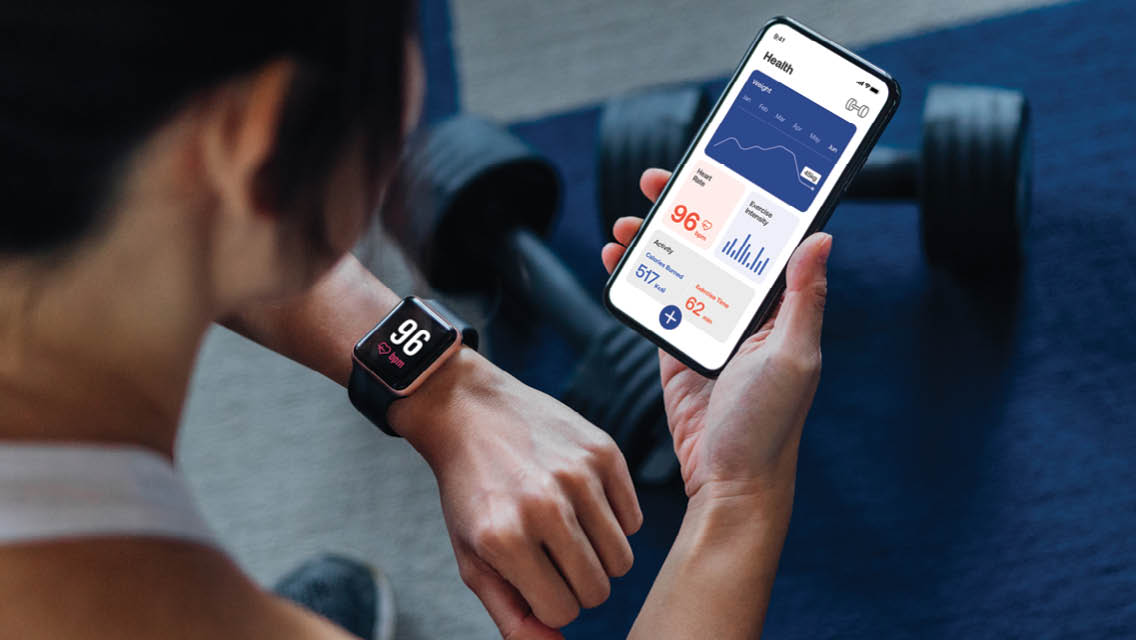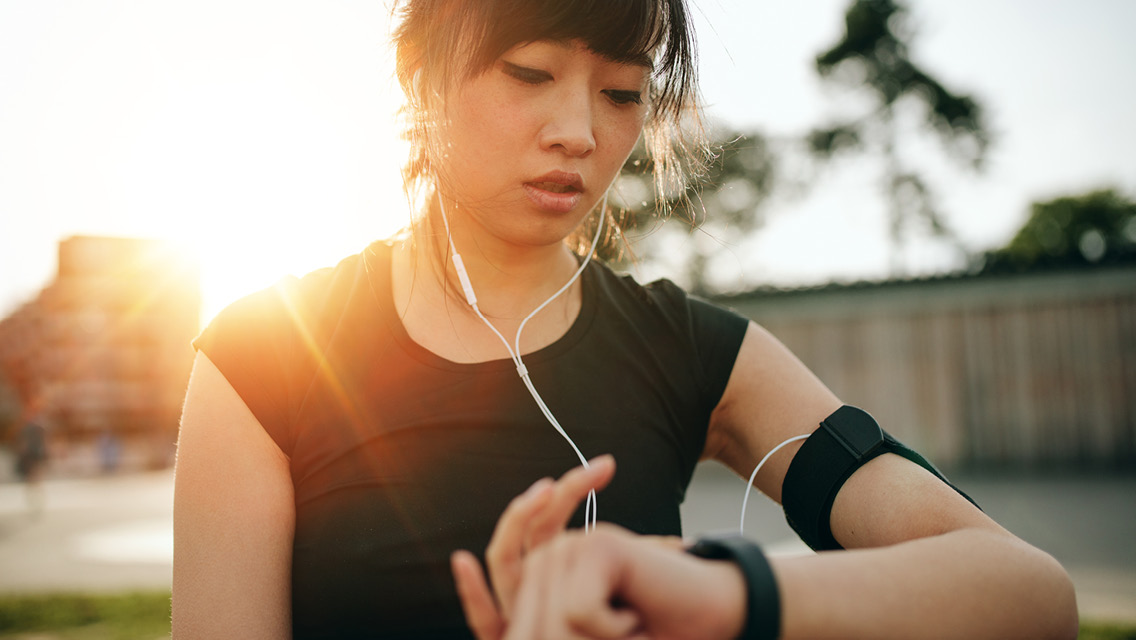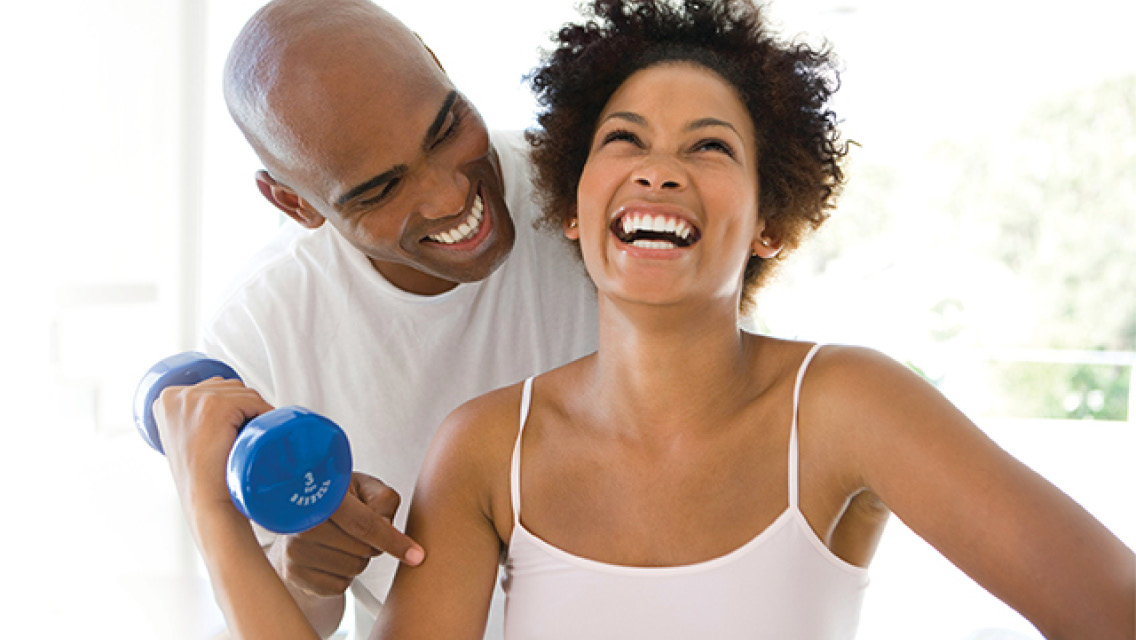Every few months, my BFF Becca and I convene to talk seriously about something not so serious: Is it time to change the Move goals on our Apple Watches?
Move is one of the primary activity markers the watch tracks and refers to active energy (calories) burned through exercise. You can set your Move goal for any number you like, as well as link your account with friends’ to share goals and achievements. Becca and I have been sharing our activity info through our watches for about two years.
I’ve spoken to many people who find tracking and sharing their data stressful. Wearing their goals on their wrists — and receiving reminders throughout the day telling them whether or not they’re on track to meet those goals — is too much pressure. Letting friends and family see how they’re “succeeding” or “failing” makes them feel set up for judgment; even if their loved ones don’t judge them, they judge themselves.
This perceived pressure pushes some folks to force their bodies to exercise simply for the sake of hitting a goal — or give up entirely because they can’t meet the goal they’ve set.
This reflects an approach to fitness that predates technology. Of course, new tech and the plethora of data we encounter has been an exacerbating force, but this tendency to outsource our intuition and rely on external sources of validation is not new.
We are socialized to beat ourselves up for not meeting goals, without thinking critically about what those goals represent and how they serve us. We tell ourselves, I’m a failure because I didn’t reach this goal.
Instead, I wish we could ask ourselves: Is this goal right for me? Not just once before setting off toward that goal but repeatedly throughout our training, throughout our journey, throughout our experience.
Although I spent years struggling with the physical and mental toll of not-quite-right goals, I haven’t struggled with using my Apple Watch. I believe that’s because I spent even more years learning to train based on my intuition alone, without setting goals.
Goal-free training, if you haven’t tried it, is a wild experience. It goes against much of what we are taught to believe about exercise: that you can’t get better without a goal, because then there’s no purpose to the exercise.
That conventional thinking is a lie.
Learning to read your body, understanding what it needs, and approaching movement with curiosity is hard and scary — and practicing this approach to exercise helped me grow stronger in body and mind than I’d ever been before.
“My priority is to honor my body, and I use fitness data as a reflection of how I’m doing.”
Now that I do set goals again, my priority is to honor my body, and I use fitness data as a reflection of how I’m doing.
It is with all this in mind that Becca and I check in about our Move goals at the change of the seasons. Each spring, we bump our individual goals up slightly, anticipating a fresh burst of outdoor activity.
In the weeks that follow, we slowly edge our numbers up farther, topping out over the summer when our activity blooms to include indoor and outdoor pursuits: lifting, yoga, dancing, walking, running, hiking, paddleboarding.
By fall, as temps cool here in Minnesota and we naturally turn inward, we follow the rhythms of our bodies. Purposely and happily, we allow our winter Move goals to settle at about half of what we pursue in the summer.
This might sound sacrilegious: Isn’t the point of improving our fitness to keep pushing farther, harder, higher?
But by knowing and honoring ourselves, we stay healthier physically and mentally.
In taking this approach together, we create built-in accountability. Yet it’s not as simple as being held accountable to doing enough or more exercise, or showing up for workouts. Instead, we remind each other to stay accountable to our bodies.
As I write these words, Becca and I have been slowly increasing our Move goals toward new summer highs. By the time you read this in the fall, we’ll be easing off. I look forward to scrolling back through my data at the end of the year to see this ebb and flow — tides that reflect not a lack of commitment to exercise, but a commitment to respecting the natural rhythms of life.
This article originally appeared as “On Using a Fitness Device, Mindfully” in the October 2021 issue of Experience Life.




This Post Has 0 Comments